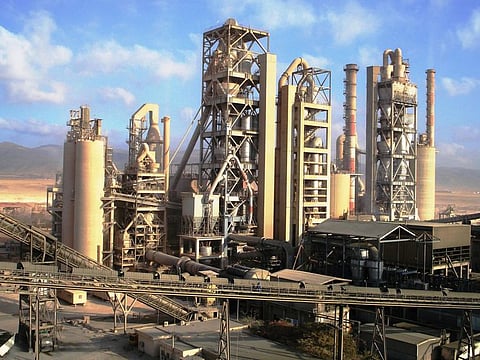Cement prices offer only relief for UAE and Gulf developers as steel shoots up
UAE and Saudi Arabia saddled with 30m tonnes of surplus cement stock: Raysut CEO

Dubai: Developers in the UAE and Gulf will not have to worry about one key commodity – cement – even as steel and wood prices rocket over supply issues. And they won’t have to bother with cement supply issues for quite a long time.
“The UAE and Saudi Arabia have over 30 million tonnes of surplus cement stock and excess capacities - there is no chance of a shortage within the region,” said Joey Ghose, CEO of Oman-based Raysut Cement Company, which by next year expects to have a 10 million tonne annual capacity by next year. “The GCC faces a serious oversupply.”
The last time cement prices in the Gulf shot up was in 2007, in the tail end of the construction and real estate boom. Since then, there has been a continuous decline.
That's in sharp contrast to the 25-30 per cent hike recorded by most other building material prices in the UAE since October last. Steel's gains are the most spectacular, from Dh1,800 a tonne to Dh2,600, while white wood is now at Dh1,000 and up from Dh600.
Ripe for a mix
In the last two years, there has been active speculation that some of the cement companies in the Gulf will have to merge to stand a better chance of surviving long-term. Many of these factories had raised significant capacities in the last 10 years, keeping in mind the real estate development activity. But with new projects dropping significantly, at least for the next two to three years, cement companies are caught in a bind.
Industry sources say that informal talks have happened between mid-sized players over mergers and acquisition possibilities. But for the moment, they are making do with controlling production and not pushing too hard on output increases.
But Ghose still has concerns – “There are new clinker plants in Fujairah and new grinding units being built. The business model for these new capacities are not fully understood.”
Lower offtake
Even in a best-estimate situation, regional demand for cement in the near-term could be down by 50 per cent or so. The decline “continues to increase,” said Ghose. “The only upside is that exports from the region have increased.”
Massive capacity
The UAE has an - installed - capacity of 35 million tonnes for cement, while Saudi Arabia has 70 million tonnes and Oman comes up with 10 million tonnes.
Add all of that and it is the main reason why cement prices remain stuck in a low range. “Prices in Saudi Arabia have always been low due to the subsidised energy costs,” the CEO added. “But of late, they have declined from $40 a tonne to $32 in- country and as low as $15 a tonne for export FOB (freight-on-board).
“Oman prices have remained stable at OR21 a tonne. The UAE’s domestic prices range from Dh140-Dh190 a tonne, whilst exports to Oman are at as low as Dh110.”
No import pressures
With prices already this low, Gulf cement producers don’t see a lot of cheaper imports happening. Unlike what local and regional steel mills have to contend with.
So much so, “Some producers in one market have been dumping in another Gulf market since 2015,” he said. “Some border taxes have been imposed - but these [cheaper] imports continue.”
Sign up for the Daily Briefing
Get the latest news and updates straight to your inbox







